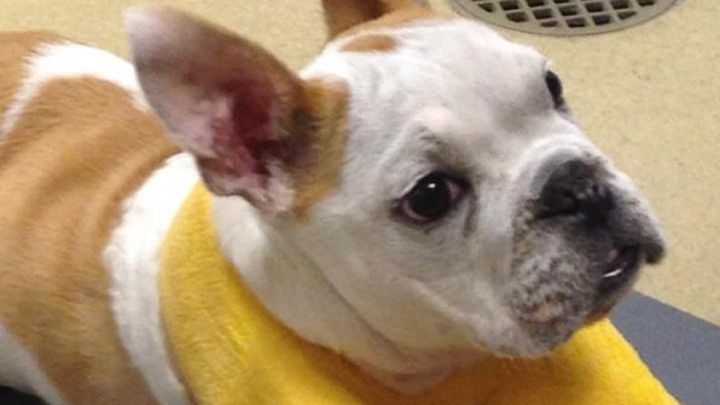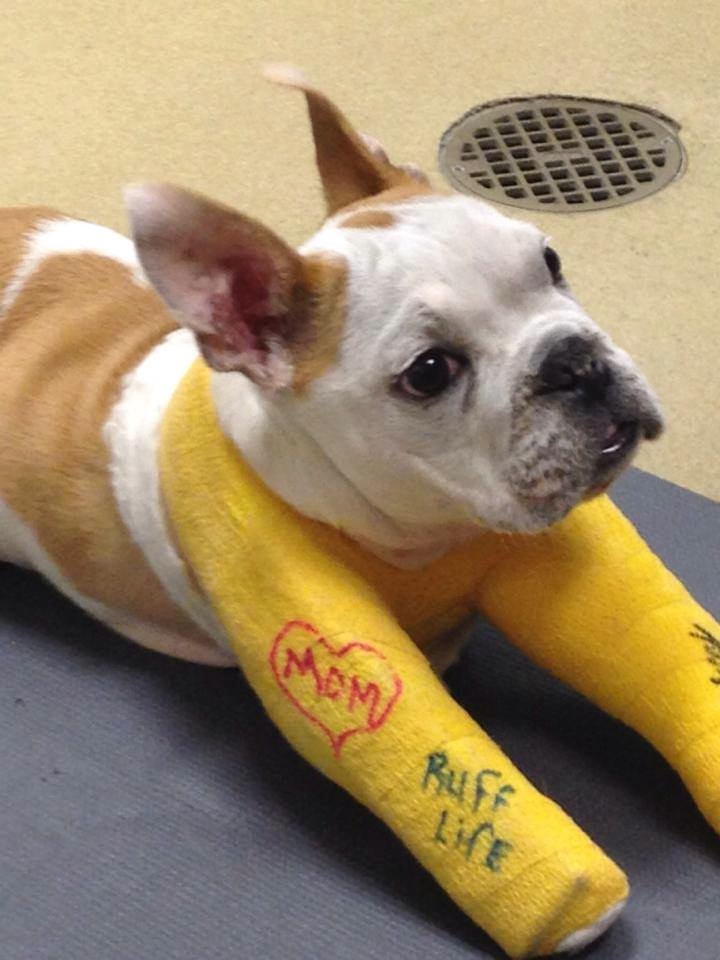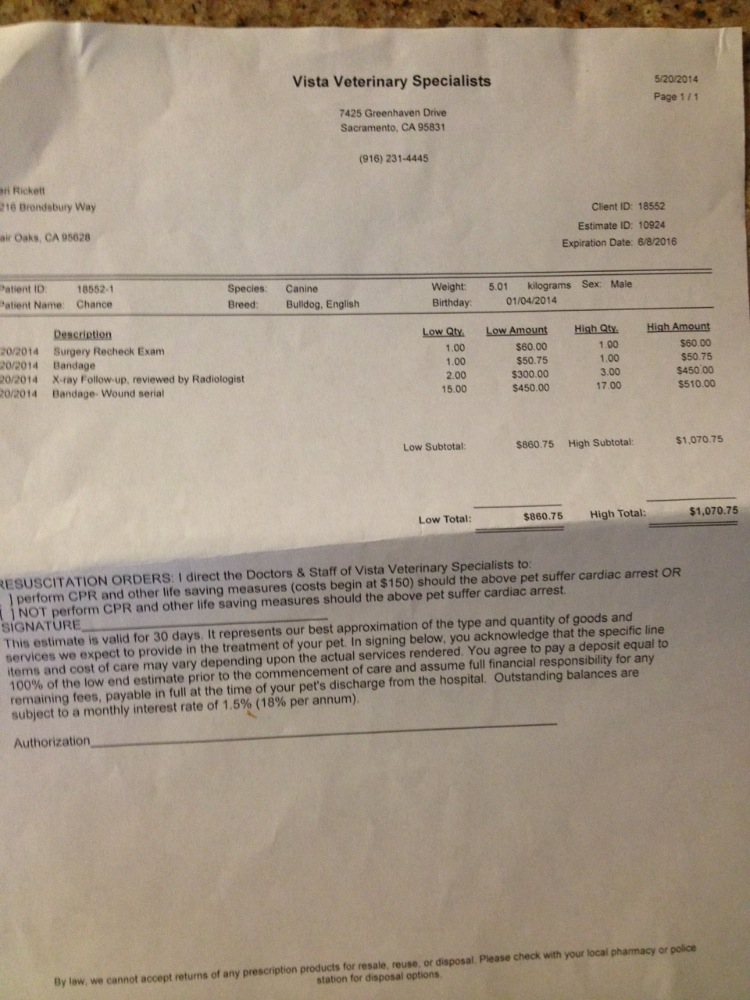
Chances Elbow Fusion Surgery
Hi everyone, some of you have been following Chances progress since our last fundraiser for him. He has gotten through his surgery and has since started physical therapy and is moving forward with his recovery. Much was achieved with the first surgery; however, the bones in the right leg did not come together at the elbow as we had hoped. Elbow fusion is required now. Elbow fusion- In other words, the bones forming the joint are permanently join together so there is no movement in this part of the limb. Chance loves to stand up but one of his arms is not strong enough to support him and the bones are not coming together as they should be. Dr. Mike Dearmin wants to do this procedure now, otherwise the elbow joint will become progressively worse. The fusion will alleviate his pain, provide strength and stability, and allow him to move that limb safely. After reviewing options and obtaining a second opinion we believe this surgery is necessary to help Chance move forward in his recovery and possibly give him the opportunity to support himself safely and possibly walk. I know we have been blessed in getting all the help and care we have recieved for Chance. This may be a lot to ask again but please consider sponsoring towards Chances surgery. We could use all the help we could get and Chance has come such a long way. Please share! Thank you everyone for all your love and support!
FACEBOOK FAN PAGE: Follow Chances daily progress here!
http://facebook.com/chancethespecialneedsbulldog
BEFORE & AFTER PAGE: Past medical cases.
http://lovesecondchances.com/success-stories/before-and-after/
--
Q&A WITH DR. MIKE: Questions we wrote down to ask the specialist to answer some questions everyone is wondering about.
Why is the surgery needed? Joint instability that cannot be treated by other means fractures involving the joint surface that cannot be repaired alleviate pain muscle/tendon that cannot be managed directly.
What is the goal? The ultimate goal with this surgery is to alleviate pain, mobilize, and stabilize.
What is the prognosis? Currently both left limbs have made significant improvement. We are hopeful that this will enable him to utilize both front legs together and support his upper body without pain or risk of further injury.
What is the recovery time? This will depend on the bones and their ability to fuse. There are a number of important steps when fusing a joint: The surface of the joint (known as the articular cartilage) must be removed to enable bony fusion. The bones forming the joint to be fused must be rigidly stabilized to maximize the possibility of bony fusion. This is most commonly achieved with one or two plates that are secured to the bones under the skin. Occasionally an external skeletal fixator (a metal framework) is employed, where the bones are stabilized with pins that penetrate the skin and are attached to bars on the outside of the limb. The recovery time will depend on if an external fixator is used. In some cases exercise must be restricted until there is radiographic (X-ray) evidence that the bones have fused. This can take up to 8 to 12 weeks.
When will he be able to travel? This will need to be determined after surgery we may not know the answer to this until several days after surgery.
What is the success rate of elbow fusion? Limb function after surgery is primarily dependent on the joint fused. Fusion of the elbow joint significantly compromises limb function. Dogs generally have to swing the limb outwardly (circumduct) when walking in order to prevent the toes dragging on the ground. The vast majority benefit from surgery. Fusion of a joint is undoubtedly a major undertaking.
What rehabilitation will he need after? He will continue with physical therapy and water therapy once the stiches or fixator is removed. His current physical therapy sessions will need to continue both at home and at VCA with Dr. Medina.
What are potential complications during and after surgery? The majority of arthrodesis operations are uneventful and are not associated with complications, however, these are major procedures and thus the following complications are possible:
Loosening or breakage of implants (plates, screws, and pins) may occur if the joint fails to fuse in sufficient time. Implant failure can result in joint instability and necessitate further surgery.
Wound problems, such as breakdown and infection, are primarily associated with arthrodesis of the carpal (wrist) and hock (ankle) joints; however, wound management within the first few weeks of surgery is of vital importance to minimize this risk. Dressings are often applied to the limb to minimize swelling and prevent the patient interfering with the wound. Fracture of bones adjacent to the fused joint may occur due to the abnormal forces that result following arthrodesis surgery.
Are there any other options? Unfortunately this is a salvage procedure that is generally only performed when there are no other options to save the function of the joint.
If external fixators are used when would the hardware get removed and does that require additional surgery? Once in surgery we will know if external fixators will be used or not. If external fixators are used they are removed under sedation and surgery is not required for that. The rate of the bone fusing will designate timing of the removal.
How much should he weigh during recovery? He will continue to grow at the same rate no changes in weight will be required but weight will be monitored.
What will we need to look for after surgery? Same as any. Temp, hydration, swelling, change in eating, and lethargy.
What will he be given for medication at home? He will continue on tramadol and an antibiotic.
If necessary will he be able to comfortably use a front cart? He should have no problem with a cart; however, the current cart Dr. Medina has developed for him that supports the body and allows for all four legs to work is ideal during his rehabilitation and as he continues to grow that is the type of cart best suited for his rehab.
Will there be a period where he needs to remain still afterwards? If so to what extent? He will need to be using the leg along with the others. He will need to minimize activity or weight bearing for a short period but his motivation and progress is intended to stay the same. Water therapy is weightless so getting him back to that quickly will be the goal.
Will there be any brace for the front leg similar to the hobbles we originally discussed? His other leg is progressing and gaining strength casting, bracing, or taping that leg would only hinder progress at this point.
How can we avoid the pneumonia again? This surgery will not be nearly as extensive as the first and his time under anesthesia will be less. He is a bulldog and there are always risks to consider with surgery. 
Xray showing that his elbow joint did not come together.
--
ESTIMATE: This includes surgery and aftercare (not including physical therapy or hydrotherapy).

--
PROGRESS VIDEO: Video of Chance doing water therapy along with his very first video for comparison on his progress!
Chance when he was first rescued.


